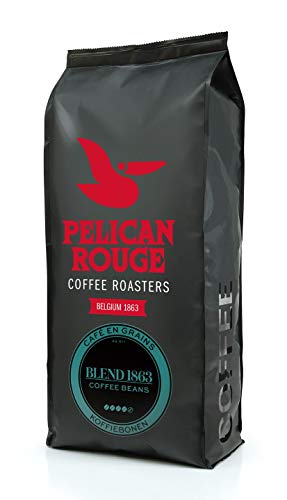Five People You Must Know In The Which Coffee Beans Are The Best Industry

Which Coffee Beans Are the Best?
The type of beans that you select can make the difference when it is making a great cup. Each has a distinct flavor that is perfect for many drinks and food recipes.
Panama is the leader in the field with their unique Geisha beans which score well in cupping tests and are expensive at auction. However, Ethiopia and Yirgacheffe beans, particularly is in close proximity.
1. Geisha Beans from Panama
Geisha beans are among the top coffee beans you can find all over the world. Geisha beans are prized for their distinctive flavor and aroma. These rare beans are grown at extremely high elevations and undergo a unique process that creates their distinctive flavor. The result is a cup that is smooth and rich in flavor.
The Geisha coffee plant is native to Ethiopia It was first introduced in Panama in 1963. Geisha coffee is famous for its superior flavor and taste. Geisha beans are also expensive due to the labor involved in growing them. Geisha coffee plants are more difficult to grow because they require higher elevations and special climate conditions.
Geisha beans are delicate and must be handled with great care. They need to be carefully separated and carefully prepared for roasting. Otherwise, they will turn acidic and bitter.

The beans are grown at the Janson Coffee Farm, which is located in Volcan, Panama. The farm specializes in high-quality production and is committed to improving the environment. They use solar panels to generate energy, recycle water and waste materials, and utilize enzyme microbes for soil improvement. They also plant trees and reuse water to wash. Their coffee is Washed Geisha, which was awarded the highest score at a Panama Coffee Competition.
2. Ethiopian Coffee
Ethiopia is a major coffee producer that has a long record of producing some of the world's finest brews. Ethiopia is the 5th largest producer of coffee in the world. Their beans are highly valued for their unique fruity, floral flavors. In contrast to other beans, Ethiopians taste their best when they are roast to a medium-low temperature. This allows the floral notes to be preserved while highlighting the fruity and citrus flavors.
Sidamo beans, well-known for their crisp acidity, are among the best around the world. However, other varieties of coffee such as Yirgacheffe or Harar are also highly regarded. Harar is the most well-known and oldest variety. It has a distinctive mocha and wine flavour. Coffees from the Guji zone are also well-known for their distinct terroir and complex flavors.
Another type of coffee that comes from Ethiopia is called natural process, and it is made using dry-processing instead of wet-processing. The main difference between these two methods is that wet-processing involves washing coffee beans, which can eliminate some fruity and sweet flavor of the coffee. Until recently, natural process coffees from Ethiopia were not as popular as their washed counterparts. They were typically used to brighten blends rather than sold as a singular-origin product on the market for specialty. However, recent technological advancements have led to better quality natural Ethiopians.
3. Brazilian Coffee
Brazilian Coffee is a rich mixture of different varieties. It is known to have low acidity. It has a sweet taste with subtle cocoa. The flavors differ based on the region and state it is grown. It is also well-known for its citrus and nut notes. It is a good option for those who prefer medium-bodied coffee.
Brazil is the world's largest exporter and producer of coffee. Brazil produces more than 30% of the world's coffee beans. Brazil's economy is heavily reliant on this major agricultural industry. Brazil has a climate ideal for coffee cultivation, and fourteen major areas for coffee production.
The main beans that are used in Brazilian coffee are Catuai, Mundo Novo, Obata and Icatu. They are all varieties of Arabica. There are a number hybrids that contain Robusta. Robusta is the name of a coffee bean that originated in Sub-Saharan Africa. It is not as flavorful as Arabica coffee, however, it is easier to grow and harvest.
It is important to realize that slavery continues to exist in the coffee industry. coffeee beans in Brazil are often forced to endure long and exhausting working hours and may not have adequate housing. The government has taken steps to deal with this issue by implementing programs to assist coffee farmers in paying their debts.
4. Indonesian Coffee
The best coffee beans from Indonesia are renowned for their dark, strong flavor and earthy taste. The volcanic ash in the soil gives them an earthy taste and a robust body. They are perfect to mix with beans from Central America or East Africa that have higher acidity. They also do well with darker roasting. Indonesian coffees are rustic and rich in flavor, with notes of wood, leather tobacco, and ripe fruit.
Java and Sumatra are the two major coffee producing regions in Indonesia however, some coffee is also produced on Sulawesi and Bali. Many farms in these areas use a wet hulling process. This is different from the washed processing method that is common in most of the world, where the coffee cherries are pulverized and washed prior to drying. The hulling process decreases the amount of water present in the coffee, which reduces the impact that rain can have on the quality of the finished product.
Mandheling is one of the best-known and highest-quality varieties from Indonesia. It is a product of Toraja. It is a robust coffee with hints of candied fruits and intense chocolate flavor. Other types of coffee from this region include Gayo and Lintong. They are often wet hulled and have a strong and smokey flavor.
